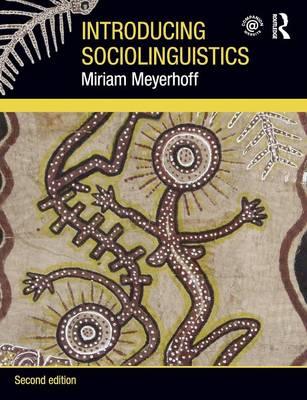Overview
'A welcome introduction to sociolinguistics by a leading researcher in the field. Users will be inspired by the breadth and sweep of Meyerhoff's treatment.' -- William Labov, University of Pennsylvania, USA 'Authoritative, yet open-minded, innovative yet touches all the bases that need to be touched. It embodies a passion for sociolinguistics that I hope many readers will embrace.' -- David Britain, University of Essex, UK 'A great book ! easy to read and by far the most easily accessible introductory text for sociolinguistics.' -- Nanna Haug Hilton, Centre for Language and Cognition, University of Groningen This second edition of Miriam Meyerhoff's highly successful textbook is supported by the Routledge Sociolinguistics Reader and online resources common to both books. It provides a solid, up-to-date appreciation of the interdisciplinary nature of the field covering foundation issues, recent advances and current debates. It presents familiar or classic data in new ways, and supplements the familiar with fresh examples from a wide range of languages and social settings. It clearly explains the patterns and systems that underlie language variation in use, as well as the ways in which alternations between different language varieties index personal style, social power and national identity. New features of the second edition: a wider range of approaches to politeness theory incorporating an international range of research expanded sections on multi-lingualism and code-switching, social class, dialect contact and tracking change over time linkage to the new Routledge Sociolinguistics Reader which can be used alongside this textbook, allowing students to supplement and build on material covered in the textbook. a shared website serving both Reader and Textbook which includes web- and video-links, interactive exercises and an expanded online glossary at: www.routledge.com/textbooks/meyerhoff a refreshed text design to assist navigation through textbook and reader. Each chapter includes exercises that enable readers to engage critically with the text, break-out boxes making connections between sociolinguistics and linguistic or social theory, and brief, lively add-ons guaranteed to make the book a memorable and enjoyable read. With a full glossary of terms and suggestions for further reading, this text gives students all the tools they need for an excellent command of sociolinguistics.
Full Product Details
Author: Miriam Meyerhoff
Publisher: Taylor & Francis Ltd
Imprint: Routledge
Edition: 2nd New edition
Dimensions:
Width: 18.90cm
, Height: 2.00cm
, Length: 24.60cm
Weight: 0.720kg
ISBN: 9780415550062
ISBN 10: 0415550068
Pages: 342
Publication Date: 03 February 2011
Audience:
College/higher education
,
Postgraduate, Research & Scholarly
,
Undergraduate
Replaced By: 9781138185593
Format: Paperback
Publisher's Status: Out of Print
Availability: In Print

Limited stock is available. It will be ordered for you and shipped pending supplier's limited stock.
Reviews
'A great book ... easy to read and by far the most accessible introductory text for sociolinguistics.' - Nanna Haug Hilton, Centre for Language and Cognition, University of Groningen
'A great book ... easy to read and by far the most accessible introductory text for sociolinguistics.' - Nanna Haug Hilton, Centre for Language and Cognition, University of Groningen
Author Information
Miriam Meyerhoff has taught sociolinguistics in places as diverse as New Zealand, Hawai'i, the mainland United States, Vanuatu and Scotland. She has consulted on sociolinguistic issues for the print and broadcast media and published books and articles on language variation, language and gender, and language contact. She is currently Professor of Sociolinguistics at the University of Auckland, New Zealand.




